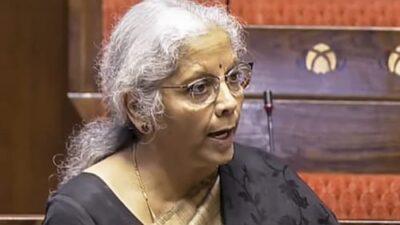The program has expanded significantly. From ₹1.3 lakh crore distributed in FY16, annual credit under PMMY skyrocketed to over ₹5.3 lakh crore in FY24. Even amid the COVID-19 pandemic, disbursements remained strong at ₹3.1 lakh crore in FY21, with an impressive recovery observed afterward—6.6 crore loans were sanctioned in the previous fiscal year alone.
Where the Credit Went
State-specific data indicates that Tamil Nadu has led the pack, receiving over ₹3.2 lakh crore in Mudra loans. Following it are Uttar Pradesh, Karnataka, Bihar, West Bengal, and Maharashtra. However, the landscape is uneven—various Northeastern states and Union Territories recorded disbursements of only a few hundred crores over the decade, highlighting a distinct regional disparity.
Women and Marginalised Lead the Way
A noteworthy aspect has been Mudra’s reach to historically underserved demographics. Women constitute 68% of all Mudra accounts—equating to over 35 crore loans. SCs, STs, and OBCs collectively make up 50% of the beneficiary pool, with minorities contributing an additional 11%. In terms of inclusivity, the scheme seems to have made a significant impact.
Loan Sizes Growing, Businesses Maturing?
The nature of the loans is also changing. Initially, 90% of the loans fell under ₹50,000—the ‘Shishu’ category. As of FY25, that proportion has decreased to 52%, with ‘Kishor’ loans (₹50,000 to ₹5 lakh) now representing 45% of all disbursals. The average loan size has risen notably from ₹38,000 in 2016 to ₹1.02 lakh today. The government suggests this trend indicates maturing businesses and an increasing ambition for growth. It also estimates that Mudra-supported enterprises have generated nearly 10 crore jobs.
But what about NPAs and sustainability?
Nonetheless, issues persist. RBI data reveals that by 2019, ₹17,000 crore worth of Mudra loans had defaulted. While the default rate for Mudra loans stands at just 2.2%—considerably below the 8% average NPA ratio for public sector banks—experts warn against complacency. There are concerns that some borrowers are revolving loans rather than genuinely expanding their businesses.
Moreover, the inadequacy of support beyond credit—such as business training, market linkages, and guidance—could hinder long-term effectiveness. Reports indicate that banks in high-NPA areas are tightening their evaluation processes, which may diminish future loan disbursements to viable yet under-documented enterprises.
Looking Ahead
As Mudra embarks on its second decade, the accomplishments are evident: increased credit access, growth in women-led businesses, and enhanced rural inclusion. Yet, the deficiencies—unequal regional outreach, repayment pressures, and lack of entrepreneurial development—suggest that credit alone is insufficient.
To genuinely unlock the next growth phase, Mudra will need to transition from a mere lending program into a more comprehensive ecosystem that supports and sustains India’s smallest businesses.



